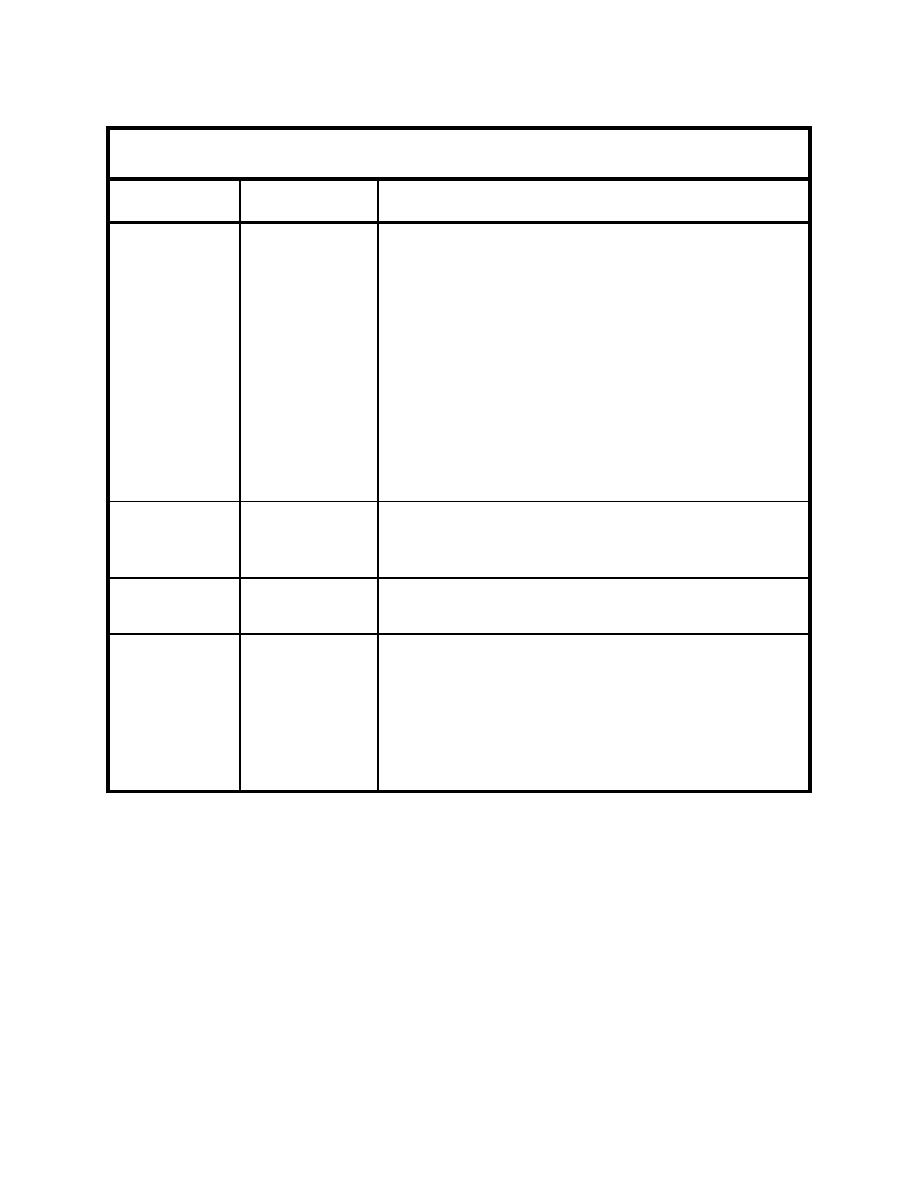 |
||
|
|
||
|
Page Title:
Table 8. Data Requirements and Testing for Leachate Collection Systems |
||
| |||||||||||||||
|
|
 ERDC TN-DOER-R6
December 2004
Table 8
Data Requirements and Testing for Leachate Collection Systems
ASTM Procedures
Comments
Requirement
and References
Granular materials
USEPA 1992a
granular materials used for the drainage layer for waste piles and
landfills and 1x10-1 cm/sec for granular materials used in surface
impoundments. Most clean, free-draining sands and gravels function
adequately as drainage layers for leachate collection systems. Those
soils which function best as drainage layers normally contain less
than 6 percent by weight (74 microns or 0.0029 inches) passing the
No. 200 sieve (U.S. Standard) and have a hydraulic conductivity
greater than 10 cm/s. Soils which contain higher fractions of fines
may function adequately during the initial phases of the operation,
but experience has shown that these soils are more susceptible to
clogging as a result of biological activity and saturation from the
leachate. Gravel installed with particle sizes that are too small tend
to "sift" into the waste leaving a void. Those with grain-size
distributions that are too large tend to entrain and accumulate fine
particulate matter that can either clog the drainage layer or the filter
fabric around the layer.
Synthetic materials
USEPA 1992a
Synthetic materials used in drainage layers require a minimum
hydraulic transmissivity of 3x10-5 m2/sec for waste piles and landfills
impoundments.
Geonets
ASTM D4716-00
Used as lateral drainage layers in leachate collection systems,
geonets serve as high-hydraulic-conductivity corridors for leachate
(ASTM 2000c)
transport.
Soil retention and adequate permeability are required for proper
function of geotextiles to filter leachate and separate soil, dredged
material, and other liner materials from the drainage layers.
USEPA 1992a
Permeability
ASTM 4751-99a
Soil retention
(ASTM 1999b)
Costs. Liner costs are directly related to the areal size of the CDF. The larger the CDF, the greater the
amount of liner materials and construction effort required. A careful study of the tradeoff between areal
footprint and hydraulic efficiency to enhance suspended solids removal is required, as outlined in USACE
(1987). For example, using spur dikes to increase hydraulic efficiency can reduce the areal footprint,
resulting in reduced liner costs. USACE models DYECON (Hayes and Schroeder 1992a) and SETTLE
(Hayes and Schroeder 1992b) are also available to assist the designer in this regard. A second factor in
liner costs is the selection of liner materials. As illustrated in Table 9, qualitative costs for liner systems
range from the least cost (clean dredged material) to the most expensive (composite liner system).
Additional cost considerations include site accessibility (mobilization and demobilization) and labor and
material costs of the geographic region.
18
|
|
Privacy Statement - Press Release - Copyright Information. - Contact Us - Support Integrated Publishing |